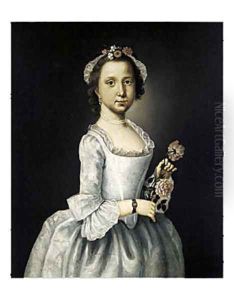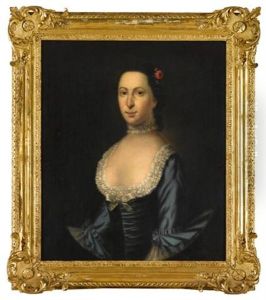Lawrence Kilburn Paintings
Lawrence Kilburn, also known as Laurence Kilbrunn, was a British-born artist who achieved prominence in the mid-18th century, particularly in colonial America. Born in 1720 in London, England, Kilburn's early life and training are not well-documented, but it is known that he pursued a career in the arts, developing his skills in portraiture.
Kilburn's journey as an artist took a significant turn when he decided to emigrate to the American colonies. It was a time when American cities were growing, and the demand for skilled portrait painters was on the rise due to the increasing wealth and the desire of the colonial elite to document their status and legacy through portraiture. Kilburn saw an opportunity to establish himself in this burgeoning market.
Arriving in New York in 1754, Kilburn quickly became one of the city's leading portrait painters. His work appealed to a broad range of patrons, from wealthy merchants to influential figures within the colonial administration. Kilburn's style was characterized by a certain directness and an attention to detail, reflecting the aesthetics of the period. His portraits are often noted for their clear, realistic representation of the subject, capturing both the physical likeness and a sense of the individual's personality.
Kilburn's career in New York was not without competition, as other artists were also vying for commissions. However, his ability to capture the likeness and character of his sitters helped to maintain his reputation as a skilled portraitist. Despite this, little is known about his personal life or his artistic training, which remains a subject of speculation among art historians.
Tragically, Kilburn's life and career were cut short when he was killed in a violent altercation in 1775. The incident, which resulted in his untimely death, was apparently a dispute over a debt, illustrating the precariousness of life for even successful artists in colonial America. Kilburn's death marked the end of a career that had significantly contributed to the visual history of the period. Today, his surviving works are valuable for their artistic merit and for the historical insight they provide into the faces and fashions of colonial America.

